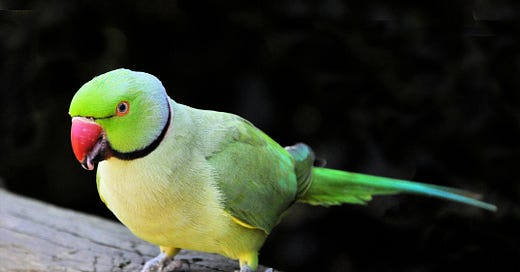Travis Joseph Rodgers
Identity
We compare and contrast things to understand our place in the world. Similarities reveal that we are not so different from other folks. But there is a relation closer than similarity. It’s called identity. What does it mean to say that two things are identical? In philosophical terms, it is dubious that two things can really be identical. If they were identical, wouldn’t they be one and the same thing? Call this the identity-uniqueness problem. Here’s another problem. How can something be the same despite the many changes it undergoes? Consider how different you are from the you of a week, a month, a year, a decade ago. Call this the sameness-through-change problem of identity.
Intrinsic vs. Relational Properties
Imagine a world (or universe) that contains only two spheres, as the philosopher Max Black invited readers to do. The spheres are made of the same material. They are the same size, temperature, color, etc. They have, let us suppose, all the same intrinsic features. What are intrinsic features? It is easier to show what they are not, by contrasting them with relational properties.
Relational properties are characteristics a thing has in virtue of its standing in relations to things. Let’s dig into this technical language. A relation relates two or more things. The things related are given the Latin labels relata (singular, relatum). If Richard is taller than Elizabeth, then the two are related in this way:
Tre.
Here, let Txy stand for “x is Taller than y”, let r represent Richard, and let e represent Elizabeth.
This relation “holds” between any two things that we can plug in and make a true statement. So, it holds between Mt. Kilimanjaro (k) and me (t) (Tkt). It does not hold between a coffee cup (c) and a Prius (p), Tcp, unless we specify them in the correct order: Tpc.
Intrinsic properties are those that "things have in virtue of the way they themselves are," according to the philosopher David Lewis. Size, shape, and material composition are good candidates for intrinsic properties.
Our two spheres, as we have said, share all intrinsic properties. Can they also have all the same relational properties? It’s false that one is taller than the other. It’s true that one is equidistant from the other. It’s false that one is older than the other. One central question associated with identity is whether it is possible for two things to have all the same properties and yet be distinct. This is what I have called the identity-similar problem. Black asks whether identical things are indiscernible and whether indiscernible things are identical.
The Person and the Parrot
The ambiguity and vagueness of language often complicates our discussions of identity. John Lock’s Essay Concerning Human Understanding explores various sorts of identity. Consider: it seems uncontroversial that I am the same man as the Travis Rodgers who began writing this chapter. Locke suggests this is true because “man” is a reference to “a participation of the same continued life, by constantly fleeting particles of matter, in succession vitally united to the same organized body.” Though the matter changes, underlying the changes is a shared, continued life in a single, organized body. This seems an answer to the sameness-through-change problem, but it’s complicated.
Things like you and I are not just composites of mind and body. We are psychological things, what Locke calls substances. “Consciousness,” Lock writes, “unites existences and actions very remote in time into the same PERSON, as well as it does the existences and actions of the immediately preceding moment: so that whatever has the consciousness of present and past actions, is the same person to whom they both belong.” So, now we have sameness of man and sameness of person, and these two are not the same. Because I remember the deeds of Travis at week’s start, I am the same person as that Travis, even if I were transported into the body of a parrot and so were a different man, Locke’s view suggests.
So, we have a body with some sort of natural integrity and a psychological continuity view of what makes “men” and persons, respectively. Both these notions admit the possibility of change in attributes without a change in identity. Perhaps similar answers can be given about kittens that become cats, and seeds that become flowering plants. But the world isn’t just people and animals and plants.
The Ship of Theseus
Whatever we might say about “natural kinds,” things that exist by and in nature, we may need to say different things about artifacts (crafted things). There was a Ship of Theseus mentioned in Plutarch’s Lives. Suppose that a ship makes the journey from Athens to Crete. Over time, the ship becomes worn, and parts of it are replaced. Ater some time, every single plank that made up the ship is replaced by a new piece of wood. Is the “new” ship the Ship of Theseus? You may be tempted to say yes. But now suppose someone is in the refurbishing business. This person collects each plank as it is removed from the ship. When the entirety of the original parts are heaped up, the ship restorer assembles them in their original form. We now have two ships. Which, if either, is the Ship of Theseus?
Note that Active Ship (the one that kept making journeys) and Parts Ship (the one with the original parts) have different intrinsic properties. One consists of boards XYZ while the other consists of ABC. They have different extrinsic features, too, as they can clearly stand in different places in the world relative to other landmarks (unlike our spheres, as there were only the spheres in that world). So, does function determine the ship? Does matter (the material) determine the ship?
If these questions are as interesting as they are confusing, you may be interested in metaphysics, the philosophical study of the nature of reality.




